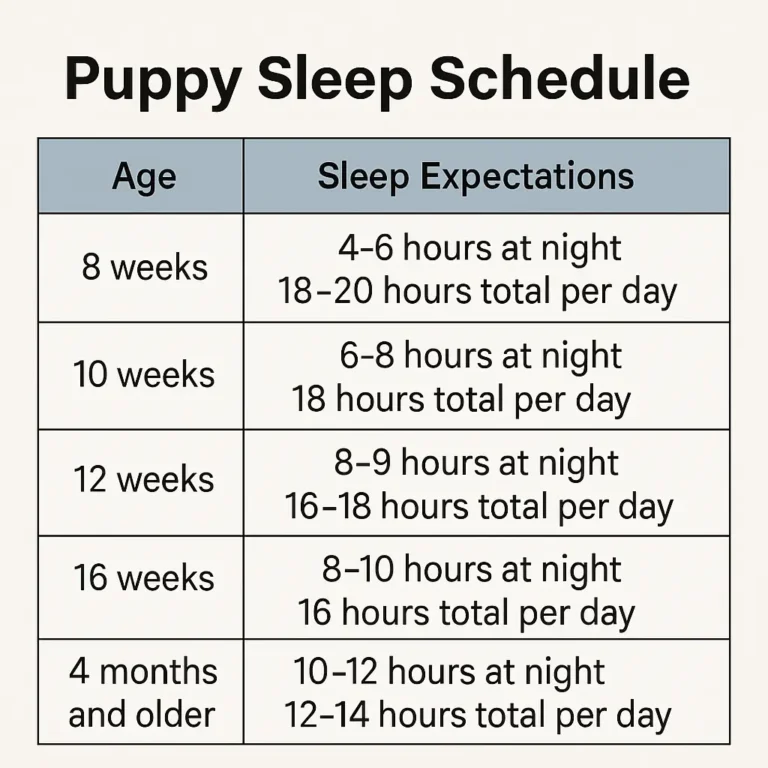The Australian Shepherd Mix is a versatile and family-friendly dog, known for its intelligence, loyalty, and boundless energy. These mixes often combine the Aussie’s herding instincts with traits from other breeds, resulting in adaptable companions that thrive in active households. Whether you enjoy hiking, running, or playing fetch, an Australian Shepherd Mix will eagerly join in. Their affectionate nature makes them great with kids, while their alertness means they’re also excellent watchdogs. Training is typically easy due to their eagerness to please. With proper socialization and exercise, Australian Shepherd Mixes make loving, loyal additions to families of all sizes.
Australian Shepherd
Australian Shepherd – A Smart and Energetic Herding Dog
The Australian Shepherd is a highly intelligent and energetic cattle herding breed known for its agility, obedience, and loyalty. Despite its name, this breed originated in the United States and has gained immense popularity among active families, farmers, and dog sports enthusiasts. The Australian Shepherd thrives on physical activity and mental stimulation, making it an ideal companion for outdoor enthusiasts. This breed is often recognized for its striking coat colors, including blue merle and red merle with captivating eye colors like blue, amber, or brown. Known for their trainability, Australian Shepherds excel in obedience training, agility courses, and herding trials. They form strong bonds with their families and are protective of their loved ones. With the right training and socialization, this dog breed is affectionate, social, and eager to please. Whether as a working dog or a loyal pet, the Australian Shepherd is a remarkable companion.

Australian Shepherd Puppy: Playful and Full of Energy
An Australian Shepherd puppy is a bundle of energy, curiosity, and intelligence. These puppies are known for their quick learning abilities and require early socialization and obedience training to develop into well-mannered adults. Their herding instincts may lead them to chase children or other pets, making supervision essential. Providing interactive toys, play sessions, and basic training from an early age helps them stay mentally engaged. As they grow, their boundless enthusiasm and affectionate nature make them excellent companions for active families. Proper diet, vet checkups, and early exposure to different environments shape a well-rounded Australian Shepherd puppy.
Breed Traits
The Australian Shepherd is an energetic, intelligent, and highly trainable breed. Their herding instincts, affectionate nature, and eagerness to please make them ideal working dogs, agility champions, and loyal family pets.
With proper care, Australian Shepherds have a lifespan of 12 to 15 years. A balanced diet, regular exercise, and routine vet checkups ensure a long, healthy, and active life.
The Australian Shepherd typically stands 18 to 23 inches tall at the shoulder. Males are slightly taller than females, but size may vary depending on genetics and nutrition.
An adult Australian Shepherd weighs between 40 to 65 pounds. Males are heavier than females. Proper diet, exercise, and portion control help maintain an ideal weight for this energetic breed.
Australian Shepherds thrive in active households with ample space to run and play. They adapt well to farms, large yards, or homes with dedicated exercise routines but struggle in small apartments.
Breed Characteristics
The Australian Shepherd is a medium-sized, agile, and intelligent breed with herding instincts. They have a thick double coat, striking eye colors, and require regular exercise, training, and mental stimulation.
Australian Shepherds make excellent family dogs. They are affectionate, protective, and playful. Their high energy suits active households, but early training is essential to manage their strong herding instincts around children.
The Australian Shepherd has a muscular build, expressive almond-shaped eyes, and a dense double coat in various colors. Their athletic structure makes them perfect for agility sports and herding activities.
This breed is highly social and enjoys human companionship. Australian Shepherds bond closely with their families and get along with other pets when properly socialized from an early age.
Australian Shepherds are affectionate, intelligent, and energetic. They love challenges, excel in obedience training, and form strong attachments with their owners, making them one of the most loyal breeds.
Training an Australian Shepherd: Tips for Success
Training an Australian Shepherd requires patience, consistency, and positive reinforcement. Due to their intelligence and eagerness to learn, they respond well to commands and structured routines. Socialization from an early age helps them interact positively with other pets and people. Engage them in obedience training, agility sports, and interactive games to prevent boredom. Mental stimulation, such as puzzle toys and advanced tricks, enhances their learning ability. Avoid harsh training methods, as they thrive on encouragement and rewards. With the right guidance, the Australian Shepherd becomes an obedient, well-mannered companion.
Australian Shepherd History & Facts
Despite its name, the Australian Shepherd was developed in the United States, not Australia. It was bred for herding livestock, particularly on ranches in the Western U.S. These dogs trace their roots back to Basque shepherds who migrated from Australia to America, leading to the name "Australian Shepherd." The breed gained popularity for its intelligence, agility, and ability to work tirelessly in harsh environments. Over the years, it has excelled in herding, search and rescue, therapy work, and dog sports. Today, the Australian Shepherd remains a beloved companion, known for its hardworking nature and strong bond with humans.
Different Eye Colors
Some Australian Shepherds have heterochromia, meaning each eye is a different color.
Bobtail Trait
Many are born with a natural bobtail, while others have docked tails.
Intelligent Workers
They excel in herding trials, agility sports, and obedience competitions.
Highly Vocal
Australian Shepherds use barks, whines, and other vocalizations to communicate.
Great Therapy Dogs
Their intelligence and affectionate nature make them ideal service and therapy dogs.
Australian Shepherd: Versatile and Family-Friendly
Nutrition Needs: The Best Diet for an Australian Shepherd
The Australian Shepherd requires a high-protein, balanced diet to support its active lifestyle. Opt for high-quality kibble or raw food containing lean meats, vegetables, and healthy fats. Avoid fillers like corn and artificial additives, as they can cause digestive issues. Feeding portions depend on age, size, and activity level—typically 1.5 to 2.5 cups of food daily, split into two meals. Fresh water should always be available. Treats can be used for training but should be given in moderation. Supplements like glucosamine support joint health, while omega-3 fatty acids promote a shiny coat and healthy skin.
Breed Behavior: Understanding the Australian Shepherd’s Temperament
The Australian Shepherd is intelligent, energetic, and affectionate. They form strong bonds with their families and require constant stimulation to stay happy. Their herding instinct may lead them to chase moving objects, including kids and other pets. With proper training, they become well-mannered, loyal, and highly adaptable companions.
Alertness
This breed is naturally alert and observant. Their keen senses make them excellent watchdogs, always aware of their surroundings. They quickly detect strangers and unusual activities around their home.
Protectiveness
Though not aggressive, Australian Shepherds are protective of their families. They will bark to alert owners of potential threats and may act defensively if they sense danger.
Prey drive
Due to their herding ancestry, Australian Shepherds have a moderate prey drive. They may chase small animals, requiring proper training and supervision around cats, rabbits, and other pets.
Aggressiveness
Typically, Australian Shepherds are not aggressive but can show territorial behavior if not properly socialized. Early training and consistent boundaries help prevent unwanted reactivity or possessiveness.
Barking level
Australian Shepherds are moderate to high barkers. They use barking to alert owners, express excitement, or seek attention. Training and socialization can help control excessive barking in a home environment.
Trainability
With their intelligence and eagerness to please, Australian Shepherds are highly trainable. They excel in obedience training, agility sports, and advanced commands. Positive reinforcement and consistency yield the best results.
Mental stimulation needs
This breed thrives on mental challenges. Activities like puzzle toys, interactive games, herding trials, and obedience exercises keep their minds sharp and prevent destructive behaviors caused by boredom.
Intelligence
One of the most intelligent breeds, Australian Shepherds rank high in obedience and problem-solving skills. They quickly learn commands, making them excellent working dogs and family companions.
Australian Shepherd Mix: The Ultimate Family Dog with Endless Energy and Charm
The Australian Shepherd Mix is a versatile and family-friendly dog that combines the intelligence and energy of the Aussie with traits from other breeds. These hybrids often inherit the herding instinct, making them active companions who thrive with daily exercise and mental stimulation. Their loyalty and affectionate nature make them great with children and other pets. Coat colors and sizes vary depending on the mix, but most have a striking appearance and expressive eyes. Whether mixed with a Labrador, Husky, or Poodle, the Australian Shepherd Mix is an adaptable dog suited for active families who can match their playful, eager personality.
Grooming: Maintaining the Australian Shepherd’s Coat
The Australian Shepherd has a double coat that requires regular grooming. Brushing 2-3 times a week prevents matting and reduces shedding, they are generally medium non shedding dogs, while daily brushing is recommended during shedding season. Bathing should be done every 6-8 weeks using a mild dog shampoo. Routine ear cleaning, nail trimming, and teeth brushing maintain overall hygiene. Since their thick fur can trap dirt, checking for ticks and debris after outdoor activities is essential. Professional grooming may be needed occasionally. A balanced diet rich in omega-3 fatty acids promotes a healthy, shiny coat, reducing excessive shedding and skin irritations.
Physical Attributes: What Makes the Australian Shepherd Stand Out?
The Australian Shepherd is a medium-sized dog with a well-balanced, muscular build. It has a deep chest, strong legs, and a slightly curved tail. Their eyes can be blue, brown, amber, or a mix, adding to their striking look. Their agile frame allows them to excel in herding and agility sports.
Breed Size
Australian Shepherds are medium-sized dogs, with males standing 20-23 inches tall and females slightly smaller at 18-21 inches. They typically weigh 40-65 pounds, depending on gender, diet, and exercise levels.
Colours
Australian Shepherds come in blue merle, red merle, black, and red, often with white markings and tan points. Their unique merle patterns give them a one-of-a-kind, eye-catching appearance.
Coat
They have a double-layered coat, with a weather-resistant outer layer and a dense undercoat. Their fur is medium to long, slightly wavy, and requires regular brushing to prevent tangles.
Drooling
Australian Shepherds are low droolers, making them a cleaner breed for indoor living. However, drooling may increase after drinking water, eating, or due to excitement, heat, or dental issues.
Snoring
This breed generally does not snore unless they have respiratory issues, allergies, or weight problems. Ensuring proper weight management and a clean sleeping environment helps prevent breathing difficulties.
Exercise Needs
Australian Shepherds are high-energy dogs that need at least 1-2 hours of daily exercise. Activities like hiking, agility training, and herding trials help keep them physically and mentally stimulated.
Grooming Needs
Brushing 2-3 times a week prevents tangles and removes loose fur. Bathing every 6-8 weeks, trimming nails, and cleaning ears regularly help maintain their overall hygiene and coat health.
Aggressiveness
Australian Shepherds are not naturally aggressive, but they can be protective or territorial. Proper socialization, training, and exercise help prevent unwanted behaviors and ensure a well-mannered companion.
Health: Common Health Issues in Australian Shepherds
Australian Shepherds are generally healthy dogs, but they are prone to conditions like hip dysplasia, epilepsy, progressive retinal atrophy (PRA), and deafness (especially in merle-coated dogs). Their high energy levels demand a balanced diet and regular vet checkups to detect early signs of health issues. Eye problems, such as cataracts, can develop with age, so routine eye exams are essential. Owners should monitor their joints for early signs of arthritis, especially in senior dogs. Providing glucosamine supplements and a nutritious diet can improve joint health. Proper exercise, weight control, and preventative care ensure a long and healthy life.
Medium Dog Breed: Is the Australian Shepherd a Good Fit?
As a medium-sized breed, the Australian Shepherd offers the best of both worlds—large enough for outdoor activities but compact enough for indoor living. Their size makes them agile and adaptable, excelling in sports and work. They thrive in active households and require consistent training and socialization. Despite their medium build, their energy levels are comparable to larger breeds, making them ideal for owners with an active lifestyle. Their loyal nature, intelligence, and size make them excellent family pets and working dogs. However, they need space and mental stimulation to stay happy.
Australian Shepherds FAQ
Are Australian Shepherds good family dogs?
Yes, Australian Shepherds are loyal, affectionate, and protective family pets. They get along well with children and other pets when properly socialized, but their herding instincts may require training.
Do Australian Shepherds need a lot of training?
Yes, they require consistent training from puppyhood. Their intelligence and eagerness to learn make them quick learners, but they need mental challenges to prevent boredom and destructive behaviors.
How long do Australian Shepherds live?
Australian Shepherds have a lifespan of 12-15 years with proper care, a healthy diet, regular exercise, and routine vet checkups to prevent common breed-specific health issues.
Are Australian Shepherds good for first-time owners?
They are best suited for experienced owners who can meet their exercise, training, and mental stimulation needs. First-time owners should be prepared for an active and intelligent dog.
Do Australian Shepherds shed a lot?
Yes, moderate to heavy shedders, especially during seasonal shedding. Regular brushing reduces loose fur, and a healthy diet rich in omega-3 fatty acids helps maintain a strong, shiny coat.
Can Australian Shepherds live in apartments?
They can adapt to apartment living with enough exercise and mental stimulation. However, they thrive in homes with yards where they can run and play freely.
Do Australian Shepherds need a job to stay happy?
Yes! They are working dogs by nature and need activities like herding, agility training, or advanced obedience exercises to stay happy, engaged, and well-behaved.
What is the best way to train an Australian Shepherd?
Positive reinforcement, consistency, and variety work best. Use treats, praise, and engaging activities like agility training or herding games to keep them mentally stimulated and responsive to commands.
Dog Life: Ensuring a Happy and Healthy Life for Your Australian Shepherd
An Australian Shepherd’s life is best when filled with physical activity, mental stimulation, and a loving environment. They need daily exercise, engaging games, and a nutritious diet to stay happy. Providing a routine, socialization, and consistent training ensures they develop into well-adjusted companions. They thrive in homes where they can participate in activities like hiking, agility sports, or herding trials. Regular vet checkups and preventive care are crucial to maintaining their health. Whether living in a city or the countryside, an active lifestyle, positive interaction, and mental challenges will ensure a long and fulfilling life.
The Australian Shepherd is an excellent companion for active owners who can meet their training, exercise, and mental stimulation needs. They are loyal, highly intelligent, and affectionate, making them great family pets when properly trained. However, they require consistent care, grooming, and activity to prevent destructive behaviors. This breed is best suited for homes where they have space to run and tasks to complete. If you are looking for an energetic, trainable, and devoted dog, the Australian Shepherd may be the perfect match. Consider their needs, temperament, and lifestyle before making the commitment. Embark on the what dog breed am I quiz and meet your match!



























